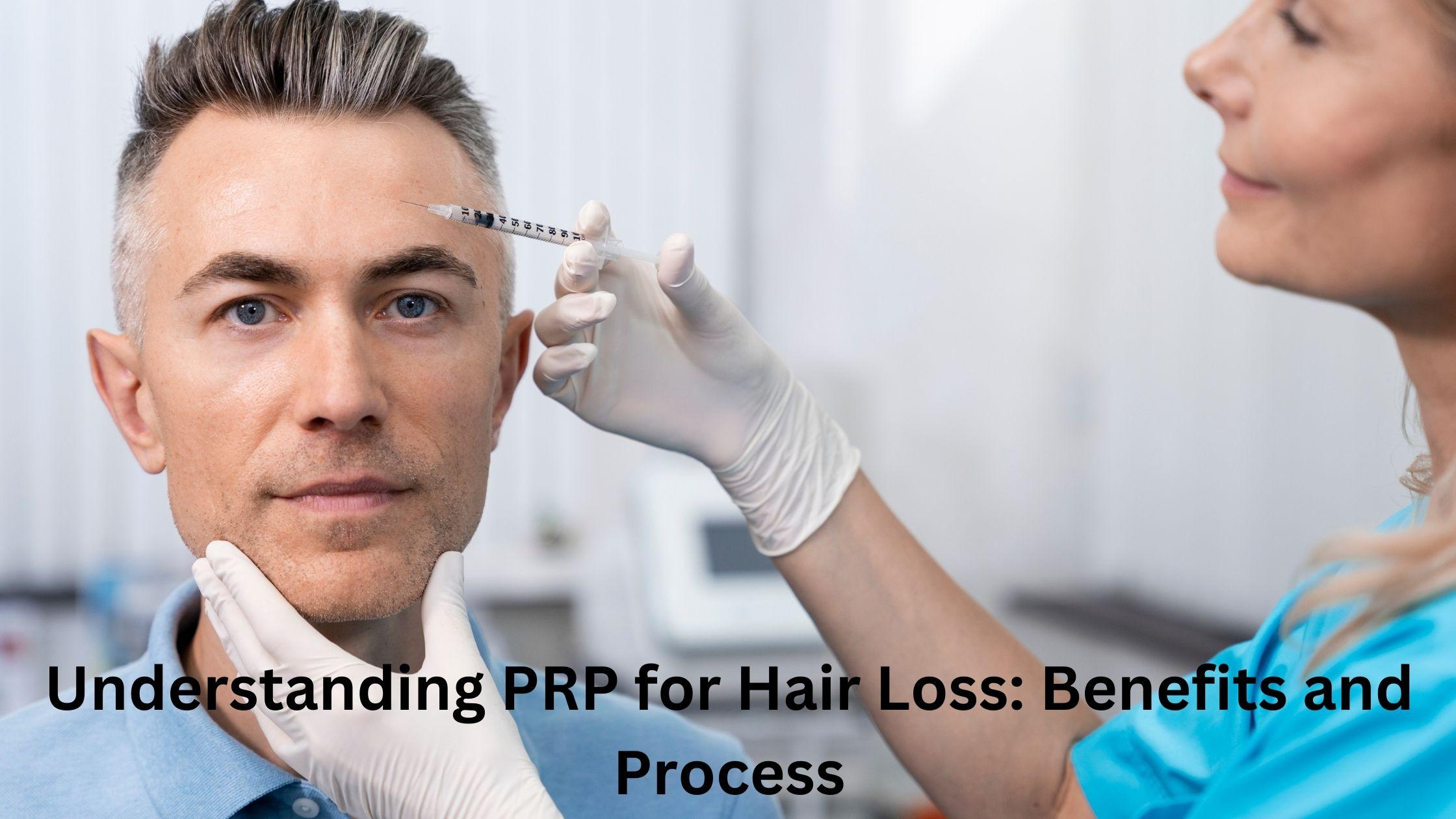Understanding PRP for Hair Loss: Benefits and Process

PRP therapy involves minimal downtime, enabling patients to return to their daily activities following treatment quickly. In this comprehensive guide, we delve into What is prp for hair loss, exploring its benefits and treatment process and addressing common questions to provide a thorough understanding of this innovative hair restoration technique.
The Benefits of PRP for Hair Loss
PRP therapy offers several benefits for individuals experiencing hair loss:
1. Stimulates Hair Growth: Stimulates hair growth" refers to processes or products that encourage the regrowth or strengthening of hair follicles. These can include treatments like minoxidil or procedures such as PRP (platelet-rich plasma) therapy. Effective stimulation of hair growth often involves enhancing blood circulation to the scalp, promoting nutrient delivery to hair follicles, and reducing factors contributing to hair loss, ultimately fostering healthier and thicker hair strands.
2. Non-Surgical and Minimally Invasive: Non-surgical and minimally invasive procedures offer gentle alternatives to traditional treatments, focusing on achieving results with less downtime and minimal discomfort. These approaches utilize advanced techniques that do not require incisions or extensive recovery periods, making them appealing options for those seeking effective yet less invasive solutions. Popular in the cosmetic and medical fields, they cater to individuals who prioritize convenience and swift recovery times.
3. Natural Results: Natural results in the context of cosmetic procedures refer to outcomes that appear authentic and harmonious with a person's features. Achieving natural results often involves skilled techniques that enhance appearance subtly, avoiding an artificial look.
4. Quick Recovery: Quick Recovery signifies the rapid restoration of health or functionality after illness, injury, or setback. It denotes efficient and effective recovery processes that minimize downtime or disruption. Whether referring to medical treatments, software solutions, or business continuity strategies, achieving quick recovery is crucial for maintaining productivity and resilience in various contexts.
The PRP for Hair Loss Treatment Process
The PRP for hair loss treatment process typically involves the following steps:
1. Blood Collection: Blood collection is a crucial procedure in healthcare involving blood extraction from a vein for diagnostic, therapeutic, or donation purposes. It is typically performed by trained phlebotomists or healthcare professionals using sterile techniques to ensure patient safety and sample integrity. Accurate blood collection is essential for conducting various tests, transfusions, and research, contributing significantly to medical diagnosis and treatment planning.
2. Plasma Separation: Plasma separation is used in medical and scientific fields to isolate plasma from blood cells. This technique involves centrifugation, where blood components are separated based on density. Plasma, the liquid portion of blood rich in proteins and antibodies, is crucial for therapies like plasma exchange or extracting specific components for medical treatments and research purposes.
3. Scalp Injection: The concentrated PRP, rich in growth factors and proteins, is injected directly into the scalp at the targeted hair loss or thinning areas.
4. Treatment Session: PRP therapy sessions usually take 30-60 minutes, depending on the extent of hair loss and the areas treated.
Conclusion
What is prp for hair loss? PRP therapy offers a hopeful solution for individuals experiencing hair loss, providing natural-looking results with no surgery and minimal recovery time. By harnessing the regenerative properties of platelet-rich plasma, PRP for hair loss stimulates hair follicles, promotes hair growth, and improves overall hair density. If you're considering PRP therapy as a hair restoration option, consulting with a qualified healthcare provider or dermatologist is essential to determine if you are a suitable candidate and to discuss expected outcomes. Embrace the opportunity to restore your confidence and achieve thicker, fuller hair through this innovative and effective treatment approach.
FAQs about PRP for Hair Loss
1. How many PRP sessions are needed to see results?
The number of PRP sessions needed varies for each individual and depends on the severity of hair loss. Usually, patients start with an initial set of treatments spaced 4-6 weeks apart, followed by maintenance sessions scheduled every 6-12 months.
2. Is PRP therapy effective for all types of hair loss?
PRP therapy is effective in individuals with early-stage hair loss or thinning but may not yield significant results in advanced cases where follicles have fully miniaturized.
3. Are there any PRP side effects or risks for hair loss?
PRP therapy, administered by a qualified healthcare provider, is generally safe.
- Questions and Answers
- Opinion
- Motivational and Inspiring Story
- Technology
- Live and Let live
- Focus
- Geopolitics
- Military-Arms/Equipment
- Güvenlik
- Economy
- Beasts of Nations
- Machine Tools-The “Mother Industry”
- Art
- Causes
- Crafts
- Dance
- Drinks
- Film/Movie
- Fitness
- Food
- Oyunlar
- Gardening
- Health
- Home
- Literature
- Music
- Networking
- Other
- Party
- Religion
- Shopping
- Sports
- Theater
- Health and Wellness
- News
- Culture

